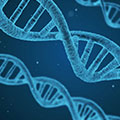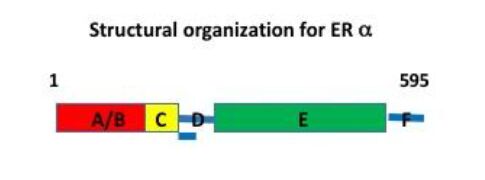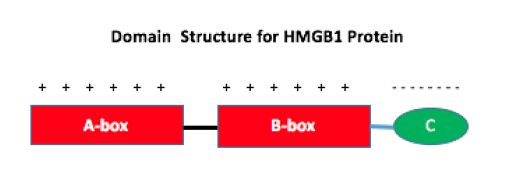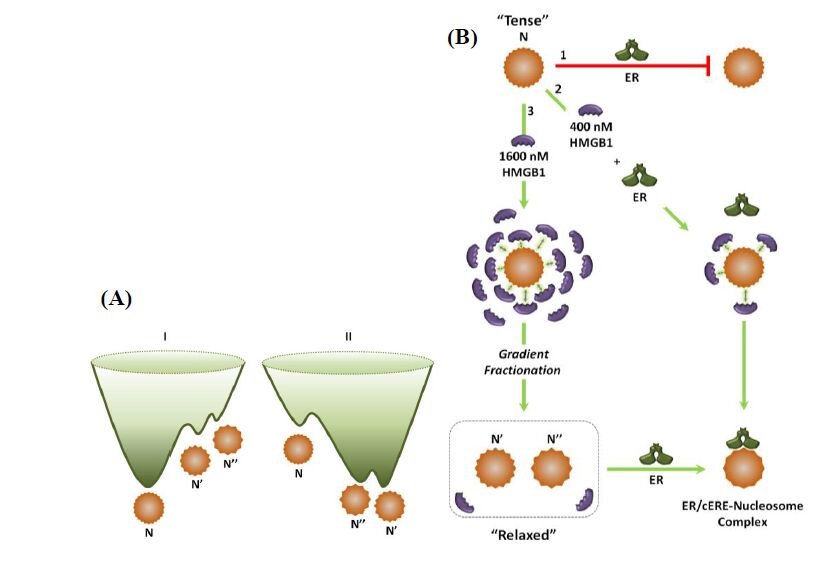|
[1]
|
Krebs JE, Lewin B, Goldstein ES, et al. (2014) Lewin‘s Genes XI, Jones & Bartlett Learning Publishers, Burlington, MA.
|
|
[2]
|
Becker PB, Horz W (2002) ATP-dependent nucleosome remodeling. Annu Rev Biochem 71: 247-273.
|
|
[3]
|
Becker PB, Workman JL (2013) Nucleosome remodeling and Epigenetics, in Cold Spring Harbor Perspectives in Biology, Editors: Allis, CD, Caparros, ML, Jenuwein, T & Reinberg, D. Cold Spring Harbor Laboratory Press, 1-19.
|
|
[4]
|
Formosa T (2012) The role of FACT in making and breaking nucleosomes. Biochim Biophys Acta 1819: 247-255.
|
|
[5]
|
McGinty RK, Tan S (2014) Nucleosome structure and function. Chem Rev 115: 2255-2273.
|
|
[6]
|
Lugar K, Dechassa ML, Tremethick DJ (2012) New insights into nucleosome and chromatin structure: An ordered state or a disordered affair? Nat Rev Mol Cell Biol 13: 436-447.
|
|
[7]
|
Lugar K, Mader AW, Richmond RK, et al. (1997) Crystal structure of the nucleosome core particle at 2.8 A resolution. Nature 389: 251-260.
|
|
[8]
|
White CL, Lugar K (2004) Defined structural changes occur in a nucleosome upon Amt1 transcription factor binding. J Mol Biol 342: 1391-1402.
|
|
[9]
|
Richmond TJ, Davey CA (2003) The structure of DNA in the nucleosome core. Nature 423: 145-150.
|
|
[10]
|
Churchill ME, Travers AA (1991) Protein motifs that recognize structural features of DNA. Trends Biochem Sci 16: 92-97.
|
|
[11]
|
Bewley CA, Gronenborn AM, Clore GM (1998) Minor groove binding architectural proteins: Structure, function and DNA recognition. Annu Rev Biophys Biomol Struct 27: 105-131.
|
|
[12]
|
Rhodes D (1997) The nucleosome core all wrapped up. Nature 289: 232-233.
|
|
[13]
|
Chakravarthy S, Park YJ, Chodaparambil J, et al. (2005) Structure and dynamic properties of nucleosome core particles. FEBS Letts 579: 895-898.
|
|
[14]
|
Cairns BR (2007) Chromatin remodeling: Insights and intrigue from single-molecule studies. Nature Struct Mol Biol 14: 989-996.
|
|
[15]
|
Davey CA, Sargent DF, Lugar K, et al. (2002) Solvent mediated interactions in the structure of the nucleosome core particle at 1.9 A resolution. J Mol Biol 319: 1097-1113.
|
|
[16]
|
Bannister AJ, Kouzarides T (2011) Regulation of chromatin by histone modifications. Cell Res 21: 381-395.
|
|
[17]
|
Zhang C, Hayes JJ (2003) Structure and interactions of the core histone tail domains. Biopolymers 68: 539-546.
|
|
[18]
|
Strahl BD, Allis CD (2001) The language of histone modifications. Nature 403: 41-45.
|
|
[19]
|
Gordon F, Lugar K, Hansen JC (2005) The core histone N-terminal tail domains function independently and additively during salt-dependent oligomerization of nucleosome arrays. J Biol Chem 280: 33701-33706;
|
|
[20]
|
Shogrin-Knaak M, Ishii H, Sun J, et al. (2006) Histone H4-K16 acetylation controls chromatin structure and protein interactions. Science 311: 844-847;
|
|
[21]
|
Dorigo B, Schalch T, Bystricky K, et al. (2003) Chromatin fiber folding: Requirement for the histone H4 N-terminal tail. J Mol Biol 327: 85-96.
|
|
[22]
|
Lee DY, Hayes JJ, Pruss D, et al. (1993) A positive role for histone acetylation in transcription factor access to nucleosomal DNA. Cell 72: 73-84.
|
|
[23]
|
Fry CJ, Peterson CL (2001) Chromatin remodeling enzymes: who’s on first? Curr Biol 11: R185-197.
|
|
[24]
|
Peterson CL, Workman JL (2000) Promoter targeting and chromatin remodeling by the SWI/SNF complex. Curr Opin Genet Dev 10: 187-192.
|
|
[25]
|
Bernstein BE, Lui CL, Humphrey EL, et al. (2004) Global nucleosome occupancy in yeast. Genome Biol 5: R62.
|
|
[26]
|
Suto RK, Clarkson MJ, Tremethick DJ, et al. (2000) Crystal structure of a nucleosome core particle containing the variant histone H2A.Z. Nature Struct Biol 7: 1121-1124:
|
|
[27]
|
Jin C, Felsenfeld G (2007) Nucleosome stability mediated by histone variants H3.3 and H2A.Z Genes Dev 21: 1519-1529); Reid, G Gallais, R, Metivier, R (2009) Marking time: The dynamic role of chromatin and covalent modification in transcription. Intl J Biochem Cell Biol 41: 135-153.
|
|
[28]
|
Gautier T, Abbott DW, Malla A, et al.. (2004) Histone variant H2ABbd confers lower stability to the nucleosome. EMBO Reports 5: 715-720.
|
|
[29]
|
Andrews A, Lugar K (2011) Nucleosome structure(s) and stability: Variations on a theme. Annu Rev Biophys 40: 99-117.
|
|
[30]
|
Chen J, Kinyamu K, Archer TK (2006) Changes in attitude, changes in latitude: Nuclear receptors remodeling chromatin to regulate transcription. Mol Endocrinol 20: 1-13.
|
|
[31]
|
Borggrefe T, Yue X (2011) Interactions between subunits of the Mediator complex with gene-specific transcription factors. Semin Cell Dev Biol 22: 759-768.
|
|
[32]
|
Plaschka C, Nozawa K, Cramer P (2016) Mediator architecture and RNA polymerase II interactions. J Mol Biol 428: 2569-2574.
|
|
[33]
|
Malik S (2016) Eukaryotic transcription regulation: Getting to the heart of the matter: Commentary on Mediator architecture and RNA polymerase II by Plaschka et al. J Mol Biol 428: 2575-2580.
|
|
[34]
|
Zaret KS, Carroll JS (2011) Pioneer transcription factors: establishing competence for gene expression. Genes Dev 25: 2227-2241.
|
|
[35]
|
Li Q, Wrange O (1995) Accessibility of a glucocorticoid response element in a nucleosome depends on its rotational positioning. Mol Cell Biol 15: 4375-4384.
|
|
[36]
|
Beato M, Eisfeld K (1997) Transcription factor access to chromatin, Nucleic Acids Res 25: 3559-3563.
|
|
[37]
|
Taylor ICA, Workman JL, Schuetz TJ, et al. (1991) Facilitated binding of GAL4 and heat shock factor to nucleosomal templates: differential function of DNA binding domains. Genes Dev 5: 1285-1298.
|
|
[38]
|
Pifia B, Bruggemeier U, Beato M (1990) Nucleosome positioning modulates accessibility of regulatory proteins to the mouse mammary tumor virus promoter. Cell 60: 719-731.
|
|
[39]
|
Eisfeld K, Candau R, Truss M, et al. (1997) Binding of NF1 to the MMTV promoter in nucleosomes: Influence of rotational phasing, translational positioning and histone H1. Nucleic Acids Res 25: 3733-3742.
|
|
[40]
|
Imbalzano AN, Kwon H, Green MR, et al. (1994) Facilitated binding of the TATA-binding protein to nucleosomal DNA. Nature 270: 481-485.
|
|
[41]
|
Wechsler DS, Papoulas O, Dang CV, et al. (1994) Differential binding of c-Myc and Max to nucleosomal DNA. Mol Cell Biol 14: 4097-4107.
|
|
[42]
|
Angelov D, Charra M, Seve M, et al. (2000) Differential remodeling of the HIV-1 nucleosome upon transcription activators and SWI/SNF complex binding. J Mol Biol 302: 315-326.
|
|
[43]
|
Li B, Adams CC, Workman JL (1994) Nucleosome binding by the constitutive transcription factor Sp1. J Biol Chem 269: 7756-7763.
|
|
[44]
|
Galati A, Ressetti L, Pisano S, et al. (2006) The human telomeric protein TRF1 specifically recognizes nucleosomal binding sites and alters nucleosome structure. J Mol Biol 360: 377-385.
|
|
[45]
|
Pham TA, McDonnell DP, Tsai MJ, et al. (1992) Modulation of progesterone receptor binding to progesterone response elements by positioned nucleosomes. Biochemistry 31: 1570-1578.
|
|
[46]
|
Ng KW, Ridgway P, Cohen DR, et al. (1997) The binding of a Fos/Jun heterodimer can completely disrupt the structure of the nucleosome. EMBO J 16: 2072-2085.
|
|
[47]
|
Lone IN, Shulka MS, Richard JLC, et al. (2013) Binding of NF-κB to nucleosomes: Effect of translational positioning, nucleosome remodeling and linker H1. PLos 9: 9. e1003830.
|
|
[48]
|
White CL, Lugar K (2004) Defined structural changes occur in a nucleosome upon Amt1 transcription factor binding. J Mol Biol 342: 1391-1402.
|
|
[49]
|
Li Q, Wrange O (1993) Translational positioning of a nucleosomal glucocorticoid response element modulates glucocorticoid receptor affinity. Genes Dev 7: 2471-2482.
|
|
[50]
|
Gottesfeld, JM, Melander C, Suto RK, et al. (2001) Sequence-specific recognition of DNA in the nucleosome by pyrrole imidazole polyamides. J Mol Biol 309: 625-639.
|
|
[51]
|
Suto RK, Edayathumangalam RS, White CL, et al. (2003) Crystal structure of nucleosome core particle in complex with minor groove DNA–binding ligands. J Mol Biol 326: 371-380.
|
|
[52]
|
Cai Y, Jin J, Yao T, et al. (2007) YY1 functions with INO80 to activate transcription. Nature Struct Mol Biol 14: 872-874.
|
|
[53]
|
Fry CJ, Peterson CL (2001) Chromatin remodeling enzymes: who’s on first? Curr Biol 11: R185-197.
|
|
[54]
|
Wang W, Chi T, Xue Y, et al. (1998) Architectural DNA binding by a high-mobility-group/kinesin-like subunit in mammalian SWI/SNF-related complex. Proc Natl Acad Sci USA 95: 492-498.
|
|
[55]
|
Guertin MJ, Lis JT (2013) Mechanisms by which transcription factors gain access to target sequence elements in chromatin. Curr Opin Genet Dev 23: 116-123.
|
|
[56]
|
Carroll JS, Liu XS, Brodsky AS, et al. (2005) Chromosome-wide mapping of estrogen receptor binding reveals long-range regulation requiring the forkhead protein A1. Cell 122: 33-43.
|
|
[57]
|
Carroll JS, Meyer CA, Song J, et al. (2006) Genome-wide analysis of estrogen receptor binding sites. Nature Genetics 38: 1289-1297.
|
|
[58]
|
Dahlman-Wright K, Qiao Y, Jonsson P, et al. (2012) Interplay between AP-1 and estrogen receptor in regulating gene expression and proliferation networks in breast cancer cells. Carcinogen 33: 1684-1691.
|
|
[59]
|
Uht RM, Anderson CM, Webb P, et al. (1997) Transcriptional activities of estrogen and glucocorticoid receptors are functionally integrated at the AP-1 response element. Endocrinology 138: 2900-2908.
|
|
[60]
|
Krishman, V, Wang, X, Safe, S (1994) Estrogen receptor-Sp1 complexes mediate estrogen-induced Cathepsin D gene expression in MCF-7 human breast cancer cells. J Biol Chem 269: 15921-15917.
|
|
[61]
|
Swinstead EE, Miranda TB, Paakinaho V, et al. (2016) Steroid receptors reprogram FoxA1 occupancy through dynamic chromatin transitions. Cell 165: 593-605.
|
|
[62]
|
Joseph R, Oriov YL, Huss M, et al. (2010) Integrative model of genomic factors for determining binding site selection by estrogen receptor-α. Mol Syst Biol 6: 1-13.
|
|
[63]
|
Ju BG, Lunyak VV, Perissi V, et al. (2004) A Topoisomerase IIβ–mediated dsDNA break required for regulated transcription. Science 312: 1798-1802.
|
|
[64]
|
Ruff M, Gangloff M, Wurtz JM, et al. (2000) Estrogen receptor transcription and transactivation structure-function relationship in DNA- and ligand-binding domains of estrogen receptors. Breast Cancer Res 2: 253-259.
|
|
[65]
|
Helding N, Pike A, Anderson S, et al. (2007) estrogen receptors: How do they signal and what are their targets. Physiolog Rev 87: 905-931.
|
|
[66]
|
Melvin VS, Harrell C, Adelman JS, et al. (2004) The role of the C-terminal extension (CTE) of the estrogen receptor and DNA binding domain in DNA binding and interaction with HMGB. J Biol Chem 279: 14763-14771.
|
|
[67]
|
Metivier R, Penot G, Carmouche RP, et al. (2004) Transcriptional complexes engaged by apo-estrogen receptor-α isoforms have divergent outcomes EMBO J 23: 3653-3666.
|
|
[68]
|
Berry M, Nunez AM, Chambon P (1989) Estrogen-responsive element of the human pS2 gene is an imperfectly palindromic sequence. Proc Natl Acad Sci USA 86: 1218-1222.
|
|
[69]
|
Sewack GF, Hansen U (1997) Nucleosome positioning and transcription-associated chromatin alterations on the human estrogen-responsive pS2 promoter, J Biol Chem 272: 31118-31129.
|
|
[70]
|
Reid G, Gallais R, Metivier R (2009) Marking time: The dynamic role of chromatin and covalent modification in transcription. Intn J Biochem Cell Biol 41: 155-163.
|
|
[71]
|
Shang Y, Hu X, DiRenzo J, et al. (2000) Cofactors dynamics and sufficiency in estrogen receptor-regulated transcription. Cell 103: 843-852.
|
|
[72]
|
DiRenzo J, Shang Y, Phelan M, et al. (2000) BRG-1 is recruited to estrogen-responsive promoters and cooperates with factors involved in histone acetylation. Mol Cell Biol 20: 7541-7549.
|
|
[73]
|
Sun L, Yang C, Zaidi M, et al. (2008) TNF-induced gene expression oscillates in time. Biochem Biophys Res Commun 371: 900-905.
|
|
[74]
|
Metivier R, Penot G, Hubner MR, et al. (2003) Estrogen receptor-α directs ordered, cyclical and combinational recruitment of cofactors on a natural target promoter. Cell 11: 751-763.
|
|
[75]
|
Metivier R, Reid G, Gannon F (2006) Transcription in four dimensions: nuclear receptor-directed initiation of gene expression. EMBO Reports 7: 161-167.
|
|
[76]
|
Malovannaya A, Lanz RB, Jung SY, et al. (2011) Analysis of the human endogenous coregulator complexome. Cell 145: 787-799.
|
|
[77]
|
Foulds CE, Feng Q, Ding C, et al. (2013) Proteomic analysis of coregulators bound to ER on DNA and nucleosomes reveal coregulator dynamics. Mol Cell 51: 185-199.
|
|
[78]
|
Parkkinen J, Raulo E, Merenmies J, et al. (1993) Amphoterin, the 30-kDa protein in a family of HMGB1-type polypeptides. Enhanced expression in transformed cells, leading edge localization, and interactions with plasminogen activation. J Biol Chem 268: 19726-19738.
|
|
[79]
|
Poser I, Golob M, Buettner R, et al. (2003) Upregulation of HMG1 leads to melanoma inhibitory activity expression in malignant melanoma cells and contributes to their malignant phenotype. Mol Cell Biol 23: 2991-2998.
|
|
[80]
|
Moisy D, Avilov SV, Jacob Y, et al. (2012) HMGB1 protein binds influenza virus nucleoprotein and promotes viral replication. J Virol 86: 122-133.
|
|
[81]
|
Nowak P, Barqasho B, Treutiger CJ, et al. (2006) HMGB1 activates replication of latent HIV-1 in a monocytic cell-line, but inhibits HIV-1 replication in primary macrophages. Cytokine 34: 17-23.
|
|
[82]
|
Lange SS, Vasquez KM (2009) HMGB1: The jack-of-all-trades protein is a master DNA repair mechanic. Mol Carcinog 48: 571-580.
|
|
[83]
|
Kwon J, Imbalzano AN, Matthews A, et al. (1998) Accessibility of nucleosomal DNA to V(D)J cleavage is modulated by RSS positioning and HMG1. Mol Cell 2: 829-839.
|
|
[84]
|
Ellerman JE, Brown CK, deVera M, et al. (2007) Masquerader: High mobility group box-1 and cancer. Clin Cancer Res 13: 2836-2848.
|
|
[85]
|
Scaffidi P, Misteli T, Bianchi ME (2002) Release of chromatin protein HMGB1 by neurotic cells trigger inflammation. Nature 418: 191-195.
|
|
[86]
|
Qin S, Wang H, Yuan R, et al. (2006) Role of HMGB1 in apoptosis-mediated sepsis lethality. J Exp Med 203: 1637-1642.
|
|
[87]
|
Thomas JO, Travers AA (2001) HMG1 and HMG2 and related “architectural” DNA-binding proteins. Trends Biochem Sci 26: 167-174.
|
|
[88]
|
Waga S, Shirakawa H, Mizuno S, et al. (1990) The selective binding of HMGB1 to the cruciform DNA structure and the subsequent resumption of transcription. Nucleic Acids Symp Ser 22: 81-82.
|
|
[89]
|
Stott K, Watson M, Howe FS, et al. (2010) Tail-mediated collapse of HMGB1 is dynamic and occurs via differential binding of the acidic tail to the A and B domains. J Mol Biol 403: 706-722.
|
|
[90]
|
Wolffe AP (1994) Architectural transcription factors. Science 264: 1100-1101.
|
|
[91]
|
Bonaldi T, Langst G, Strohner R, et al. (2002) The DNA chaperone HMGB1 facilitates ACXF/CHRAC-dependent nucleosome sliding EMBO J 21: 6865-6873.
|
|
[92]
|
Ross ED, Hardwidge PR, Maher LJ (2001) HMG proteins and DNA flexibility in transcriptional activation Mol Cell Biol 21: 6598-6605.
|
|
[93]
|
Das D, Scovell WM (2001) The binding interaction of HMG-1 with the TATA-binding protein/TATA complex. J Biol Chem 276: 32597-32605.
|
|
[94]
|
Jayaraman L, Moorthy NC, Murthy KG, et al. (1998) High mobility group protein-1 (HMG-1) is a unique activator of p53. Genes Dev 12: 462-472.
|
|
[95]
|
Zappavigna V, Falciola L, Helmer-Citterich M, et al. (1996) HMG1 interacts with HOX proteins and enhances their DNA binding and transcriptional activation. EMBO J 15: 4981-4991.
|
|
[96]
|
Butteroni C, De Felici M, Schöler HR, et al. (2000) Phage display screening reveals an association between germline-specific transcription factor Oct-4 and multiple cellular proteins. J Mol Biol 304: 529-540.
|
|
[97]
|
Najima Y, Yahagi N, Takeuchi Y, et al. (2005) High mobility group protein-B1 interacts with sterol regulatory element-binding proteins to enhance their DNA binding. J Biol Chem 280: 27523-27532.
|
|
[98]
|
Agresti A, Lupo R, Bianchi ME, et al. (2003) HMGB1 interacts differentially with members of the Rel family of transcription factors. Biochem Biophys Res Commun 302: 421-426.
|
|
[99]
|
Yu M, Wang J, Li, et al. (2008) Proteomic screen defines the hepatocyte nuclear factor 1 alpha-binding partners and identifies HMGB1 as a new cofactor of HNF1alpha. Nucleic Acids Res 36: 1209-1219.
|
|
[100]
|
Mitsouras K, Wong B, Arayata C, et al. (2002) Two distinct modes of action that promote enhanceosome assembly. Mol Cell Biol 22: 4390-4401.
|
|
[101]
|
Oñate SA, Prendergast P, Wagner JP, et al. (1994) The DNA-bending protein HMG-1 enhances progesterone receptor binding to its target DNA sequences. Mol Cell Biol 14: 3376-3391.
|
|
[102]
|
Melvin VS, Edwards DP (1999) Coregulatory proteins in steroid hormone receptor action: the role of chromatin high mobility proteins HMG-1 and -2. Steroids 64: 576-586
|
|
[103]
|
Das D, Peterson RC, Scovell WM (2004) High mobility group B proteins facilitate strong estrogen receptor binding to classical and half-site estrogen response elements and relax binding selectivity. Mol Endocrinol 18: 2616-2632.
|
|
[104]
|
El Marzouk S, Gahattamaneni R, Joshi SR, et al. (2008) The plasticity of estrogen receptor-DNA complexes: binding affinity and specificity of estrogen receptors to estrogen response element half-sites separated by variant spacers. J Steroid Biochem Mol Biol 110: 186-195.
|
|
[105]
|
Joshi SR, Ghattamaneni RB, Scovell WM (2011) Expanding the paradigm for estrogen receptor binding and transcriptional activation. Mol Endocrinol 25: 980-994.
|
|
[106]
|
Lu W, Peterson R, Dasgupta A, et al. (2000) Influence of HMGB-1 and adenovirus oncoprotein E1A on early stages of transcriptional preinitiation complex assembly. J Biol Chem 275: 35006-35012.
|
|
[107]
|
Watson M, Stott K, Cato J, et al. (2014) Characterization of the interaction between HMGB1 and H3—a possible means of positioning HMGB1 in chromatin. Nucleic Acids Res 42: 848-859.
|
|
[108]
|
Kawase T, Sato K, Ueda T, et al. (2008) Distinct domains in HMGB1 are involved in specific intramolecular and nucleosomal interactions. Biochemistry 47: 13991-13996.
|
|
[109]
|
Ueda T, Chou H, Kawase T, et al. (2004) Acidic tail of HMGB1 is required for its target binding to nucleosome linker DNA and transcriptional stimulation. Biochemistry 45: 9901-9908.
|
|
[110]
|
Ferreira H, Somers J, Webster R, et al. (2007) Histone tails and the H3 alphaN helix regulate nucleosome mobility and stability. Mol Cell Biol 27: 4037-4048.
|
|
[111]
|
Belandia B, Orford RL, Hurst HC, et al. (2002) Targeting of SWI/SNF chromatin remodeling complexes to estrogen-responsive genes. EMBO J 21: 4094-4103.
|
|
[112]
|
Joshi SR, Sarpong YC, Peterson RC, et al. (2012) Nucleosome dynamics: HMGB1 relaxes canonical nucleosome structure to facilitate estrogen receptor binding. Nucleic Acids Res 40: 10161-10171.
|
|
[113]
|
Schnitzler G, Sif S, Kingston RE (1998) Human SWI/SNF interconverts a nucleosome between its base state and a stable remodeled state. Cell 94: 17-27
|
|
[114]
|
Ulyanova NP, Schnitzler GR (2007) Inverted factor access and slow reversion characterize SWI/SNF-altered nucleosome dimer. J Biol Chem 282: 1018-1028.
|
|
[115]
|
Scovell WM (2016) High mobility group protein 1: A collaborator in nucleosome dynamics and estrogen-responsive gene expression. World J Biol Chem 7: 206-222.
|
|
[116]
|
Catez F, Yang H, Tracey KJ, et al. (2004) Network of dynamic interactions between histone H1 and high-mobility-group protein in chromatin. Mol Cell Biol 24: 4321-4328.
|
|
[117]
|
Cheung E, Zarifyan AS, Kraus WL (2002) Histone H1 represses estrogen receptor α transcriptional activity by selectively inhibiting receptor-mediated transcription initiation. Mol Cell Biol 22: 2463-2471.
|
|
[118]
|
Privalov PL, Dragan AI, Crane-Robinson C (2009) The cost of bending. Trends Biochem Sci 34: 464-470.
|
|
[119]
|
Yang Z, Zheng C, Thiriet C, et al. (2005) The core histone N-terminal tail domain negatively regulate binding of transcription factor IIIA to a nucleosome containing a 5S RNA gene via a novel mechanism. Mol Cell Biol 25: 241-249.
|
|
[120]
|
Vettese-Dadey M, Walter P, Chen H, et al. (1994) Role of the histone amino termini in facilitating binding of a transcription factor GAL4-AH to nucleosome cores. Mol Cell Biol 14: 970-981.
|
|
[121]
|
Vignali M, Steger DJ, Neely KE, et al. (2000) Distribution of acetylated histones resulting from Gal4-VP16 recruitment of SAGA and NuA4 complexes. EMBO J 19: 2629-2640.
|
|
[122]
|
Polach KJ, Lowary PT, Widom J (2000) Effects of core histone tail domains on the equilibrium constants for dynamic site accessibility in nucleosomes. J Mol Biol 298: 211-223.
|
|
[123]
|
Brower-Toland B, Wacker DA, Fulbright RM, et al. (2005) Specific contributions of histone tails and their acetylation to the mechanical stability of nucleosomes J Mol Biol 346: 135-146.
|
|
[124]
|
Heo K, Kim B, Kim K, et al. (2007) Isolation and characterization of proteins associated with histone H3 tails in vivo. J Biol Chem 282: 15476-15483.
|
|
[125]
|
Stros M (1987) Binding of non-histone chromosomal protein HMGB1 to histone H3 in nucleosome detected by photochemical crosslinking. Biochem Biophys Res Commun 147: 301-308.
|
|
[126]
|
Nardulli AM, Shapiro DJ (1992) Binding of the estrogen receptor DNA-binding domain to the estrogen response element induces DNA binding. Mol Cell Biol 12: 2037-2042.
|
|
[127]
|
Nardulli AM, Grobner C, Cotter D (1995) Estrogen receptor-induced bending: orientation of the bend and replacement of an estrogen response element with an intrinsic DNA bending sequence. Mol Endocrinol 9: 1064-1076.
|
|
[128]
|
Sahu G, Wang D, Chen CB, et al. (2010) p53 binding to nucleosomal DNA depends on the rotational positioning of DNA response element. J Biol Chem 285: 1321-1332.
|
|
[129]
|
Porier MG, Bussiek M, Langowski J, et al. (2008) Spontaneous access to DNA target sites in folded chromatin fibers. J Mol Biol 379: 772-786.
|
|
[130]
|
Tims HS, Gurunathan K, Levitus M, et al. (2011) Dynamics of nucleosome invasion by DNA binding proteins. J Mol Biol 411: 430-448.
|
|
[131]
|
Koshland DE Jr (1958) Application of a theory of enzyme specificity to protein synthesis. Proc Natl Acad Sci USA 44: 98-104.
|
|
[132]
|
Boehr DD, Nussinov R, Wright PE (2009) The role of dynamic conformational ensembles in biomolecular recognition. Nature Chem Biol 5: 789-796.
|
|
[133]
|
Csermely P, Palotal R, Nussinov R (2010) Induced fit, conformational selection and independent dynamic segments: an extended view of binding events. Trends Biochem Sci 35: 539-546.
|
|
[134]
|
Perutz MF (1978) Hemoglobin structure and respiratory transport. Sci Am 239: 92-125.
|









 DownLoad:
DownLoad:






